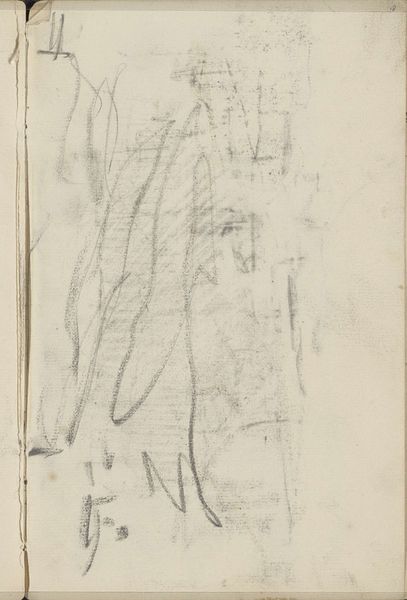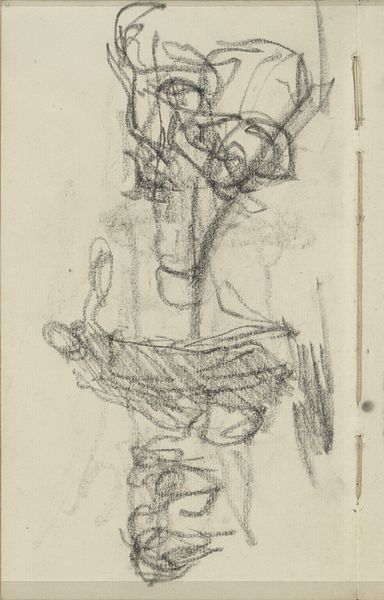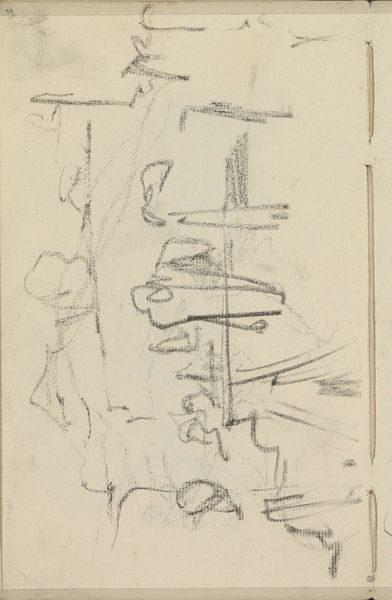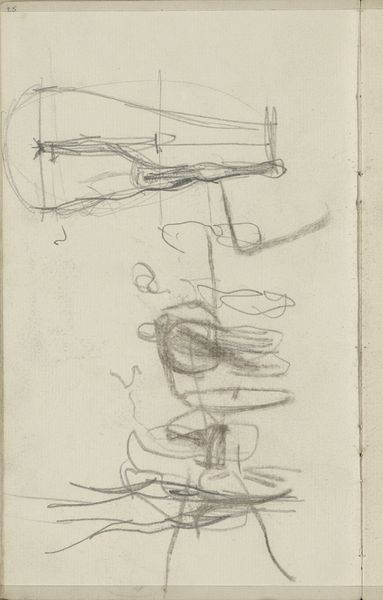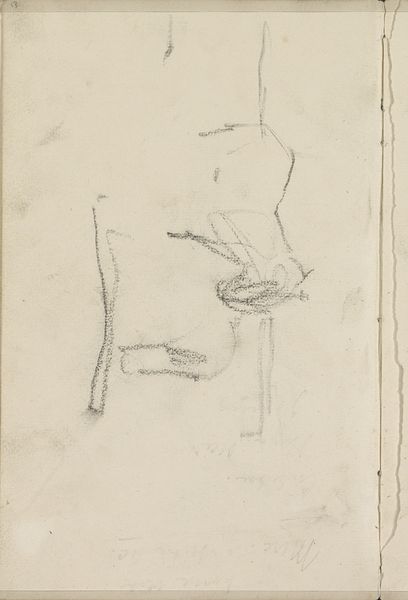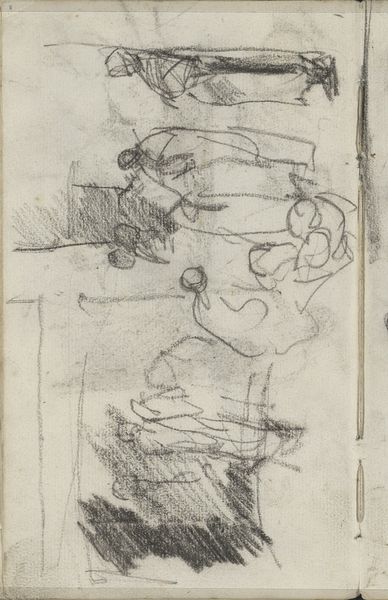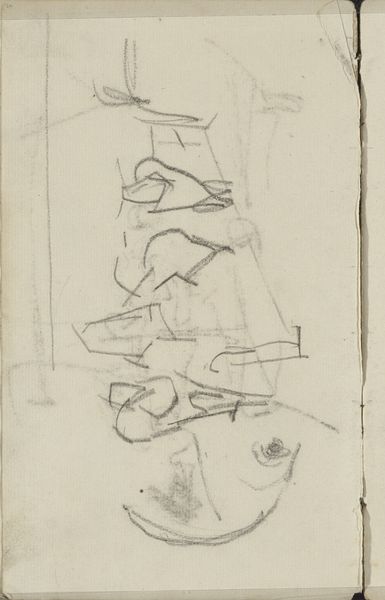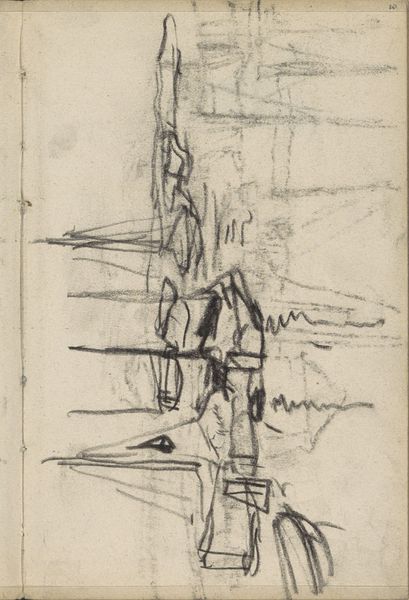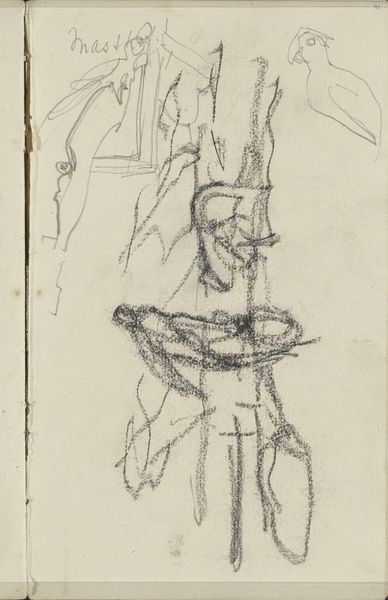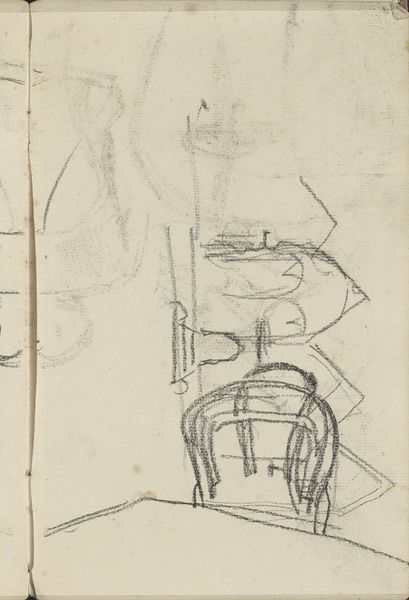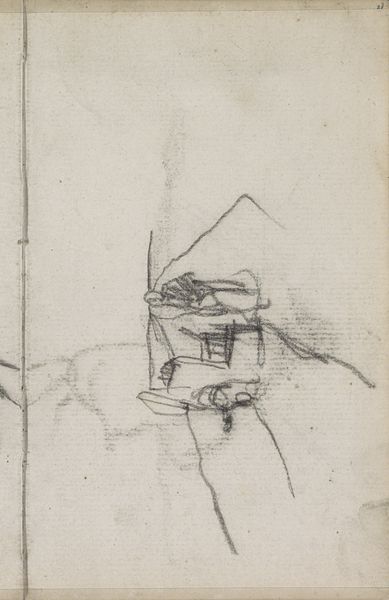
drawing, pencil
#
portrait
#
drawing
#
impressionism
#
pencil sketch
#
figuration
#
pencil
#
sketchbook drawing
#
realism
Copyright: Rijks Museum: Open Domain
Editor: This is George Hendrik Breitner's "Figuurstudie," a pencil drawing from around 1880-1882. It's striking in its simplicity, almost skeletal in its rendering. What can you tell us about its context? Curator: Well, consider that Breitner was working in a period when Realism and Impressionism were challenging academic conventions. Drawings like these offered artists the opportunity to quickly capture figures in their everyday settings. How do you think this informed Breitner's artistic intentions? Editor: I see a sense of immediacy. Was he trying to record something specific or was he just practicing? Curator: It's likely a bit of both. He might have been interested in how the lower classes were being represented in Paris by artists such as Toulouse-Lautrec and Degas at this time. Perhaps he intended to use it later for a painting, or maybe it was purely an exercise. Where does the work itself lead you to think? Editor: I notice he’s sketched quickly and moved on. Maybe capturing a specific posture more than likeness? The study feels very preliminary. Do you see it challenging social conventions for portraying a subject? Curator: Interesting! Given that Breitner focused more on capturing contemporary life in Amsterdam, depicting working-class figures, these figure studies become significant markers of a shift in subject matter within the art world, influenced by changing societal norms and urban experiences. Editor: So, even a seemingly simple sketch can be seen as part of this larger shift in artistic and social representation. I will keep this in mind as I look at other drawings! Curator: Indeed! Now you’re looking through a historian's lens!
Comments
No comments
Be the first to comment and join the conversation on the ultimate creative platform.

